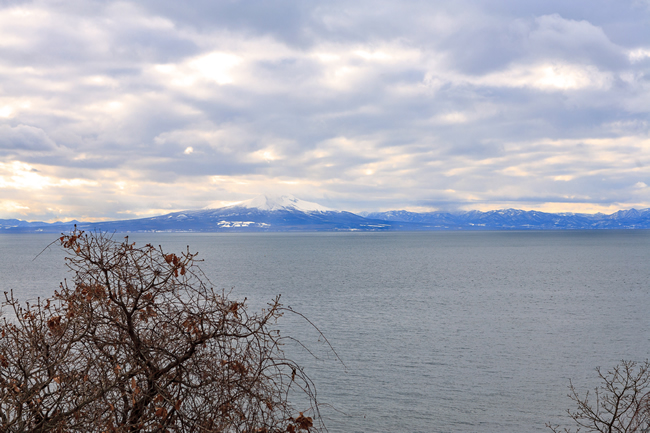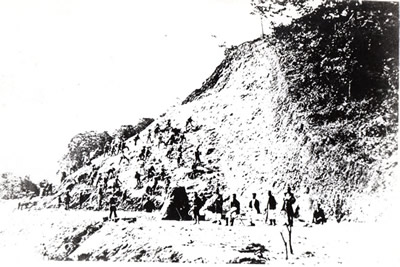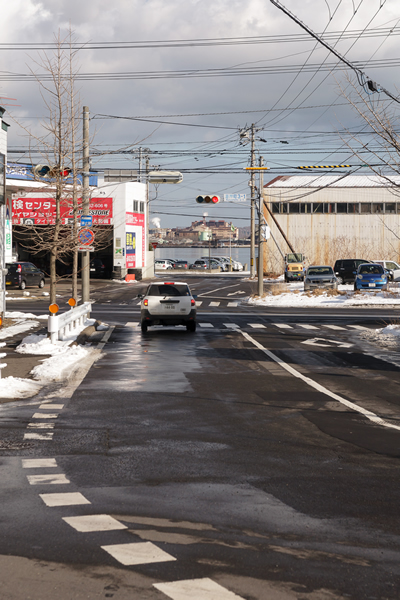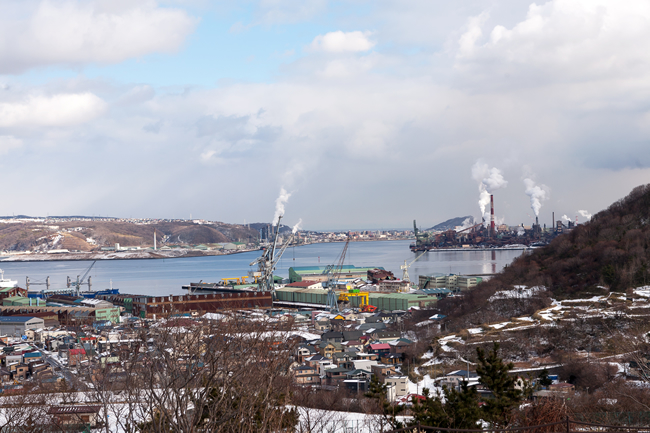
 The towns of Hokkaido - Muroran
The towns of Hokkaido - Muroran 
"Without a road from Hakodate to Sapporo via Muroran, Sapporo has no value as the capital of Hokkaido." Upon this explanation from Development Commission advisor Horace Capron, who came to Japan in 1871, the government committed to begin construction of the "Sapporo Hondo", Japan's first western-style carriageway.
This road went north to Mori, from where Funka Bay would be crossed by boat to Muroran, creating a route to Sapporo of about 180 km. Why did they establish a ship route between Mori and Muroran? If you look from the platform of Mori Station, you'll understand. Muroran appears to be even closer than you might imagine.

Funka Bay. Mt Komagatake can be seen on the opposite shore.
The construction project moved at a remarkable pace, with work starting from Hakodate in March 1872, and completion in one year, three months.

1872 (Photo courtesy of Muroran Folk Museum)

The built-up areas along Sapporo Hondo became known as "Sapporo Dori" (Sapporo Street)
In 1877, Professor Clark, the first vice-director of the Sapporo Agricultural College left Japan via this route. It's thought that he soon dispatched a letter which pointed out the wastefulness of this route, and recommended establishment of road or rail infrastructure between Sapporo and Otaru. In 1878, Isabella Bird, an English travel writer, arrived in Japan to visit the Ainu Kotan in Biratori. Isabella travelled north from Hakodate by horse, then crossed Funka Bay by boat from Mori.

The former location of Tokarimoi Pier is now an intersection in Midori-machi.
In 1882, Hokkaido's first railroad was opened between Temiya and Horonai to transport coal. Horace Capron, advisor to the Development Commission, had suggested that the railway should be built between Horonai and Muroran. Muroran Port had long been known as a favorable natural harbor, and as a point of transit between Hakodate and Sapporo, Muroran was in the limelight. Kiyotaka Kuroda, director of the Development Commission, also gave instructions for the Muroran route. But in 1878, Crawford, a civil engineer, arrived in Japan, and the situation suddenly changed. The Otaru - Horonai route was selected.

The forefather of Muroran's iron industry, Kakugoro Inoue
The person who made the Muroran route possible was Kakugoro Inoue, managing director of the Hokkaido Colliery and Railway Company. In 1892, his company established the Muroran line between Iwamizawa and Muroran. The Muroran Rail Depot was opened to the northwest of present-day Wanishi Station, and a freight station was built near Misaki Station, starting coal freight operation. In 1894, Muroran Port was designated as a special port of export, with domestic shipments of coal arriving from Otaru and coal exports leaving from Muroran.
In 1906, the railroad was nationalized, and proceeds from the sale of Hokkaido Colliery and Railway Company were used in a joint venture with an English company to establish Japan Steel Works Ltd. In 1909, Inoue's long-awaited dream became a reality, when the smelting furnaces were first fired with Horonai coal to refine iron from Funka Bay iron sand. In this moment, Muroran took the first step on its journey to become the "Iron Town".

The former Muroran Station House, built on this site in 1912, is the oldest wooden stationhouse in Hokkaido. (Photo courtesy of Muroran Folk Museum)

Hokkaido Colliery and Railway Company (Photo courtesy of Muroran Folk Museum)
